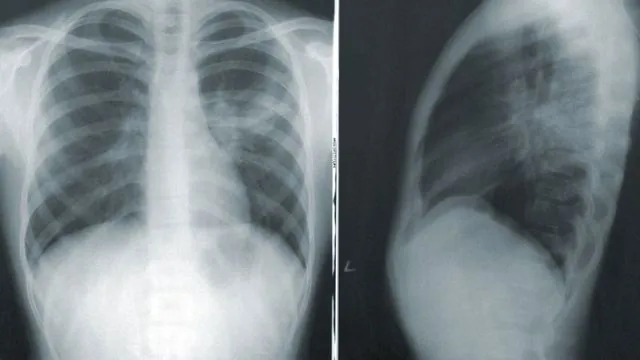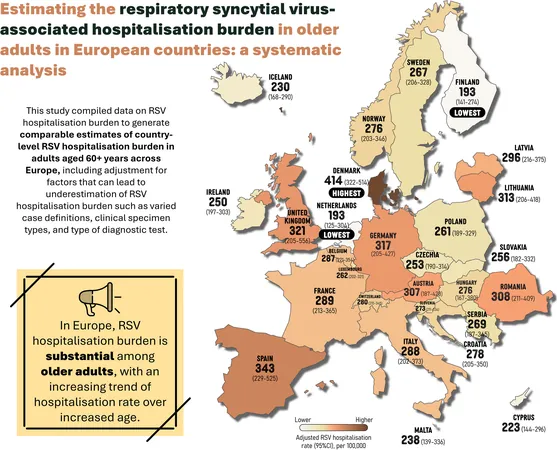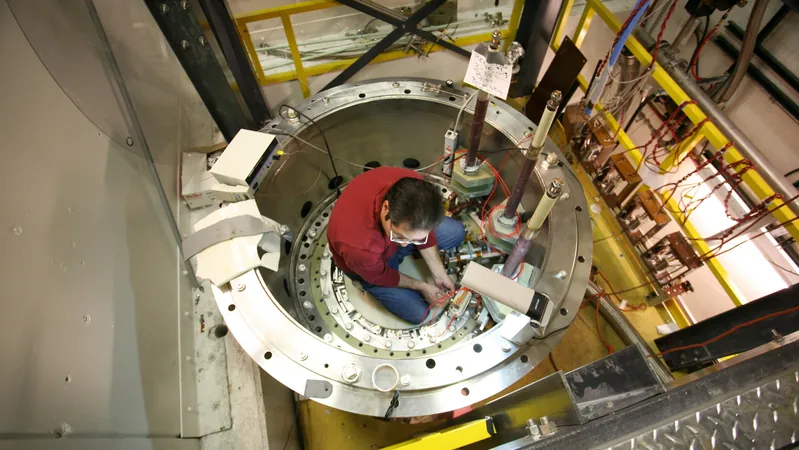
Unlocking Lung Recovery: Rare Cells Show Promise Against Smoke and Viruses
2025-07-04
Author: Arjun
A Breakthrough Discovery in Lung Repair
Stanford Medicine researchers have uncovered that a rare type of cell in the lungs is crucial for repairing damage caused by harmful toxins, such as those from wildfire smoke and respiratory viruses. These remarkable neuroendocrine cells not only help restore lung function but also play a protective role in other organs, such as the pancreas.
Impressive Findings in Experimental Treatments
In groundbreaking experiments, when mice were treated with a specialized drug to activate this lung repair pathway, they demonstrated far less damage post-influenza and COVID-19 infection. On the flip side, mice lacking this activated pathway sustained significantly worse injury.
Potential Life-Saving Applications for Humans
Researchers speculate that harnessing this pathway in humans could drastically improve outcomes for firefighters exposed to smoke and individuals suffering from chronic respiratory illnesses. Furthermore, there’s potential for preventing diabetes in those battling metabolic syndrome.
The Power of Neuroendocrine Cells
These neuroendocrine cells represent less than 1% of the epithelial cells lining the airways yet orchestrate vital processes, including oxygen sensing and immune modulation. Their solitary nature and previously unclear roles are now shedding light on significant protective functions.
The Hedgehog Protein: Key to Tissue Regeneration
Central to this discovery is the Hedgehog protein family, a group known for its role in cellular development and tissue rejuvenation. The research team identified Desert hedgehog protein as crucial for lung cell repair and observed that its absence resulted in severe sensitivity to air pollutants.
Rapid Response and Repair Mechanism
The remarkable repair process unfolds within hours of toxin exposure, amplifying signals that lead to regeneration of essential lung cells. Disruption of this signaling cascade results in intensified damage and loss of vital protective cells, underlining the pathway's importance.
Hope for Future Treatments
With findings indicating that activating the Desert hedgehog pathway significantly enhances cell survival in harmful conditions, researchers are now delving into how this pathway can be safely activated in humans. The ultimate goal? To protect against lung damage from toxins and improve health outcomes for vulnerable populations.
Looking Ahead: Targeted Activation Strategies
As scientists tread carefully, they aim to explore methods of targeted delivery, including potential aerosolized treatments for the lungs or targeted therapies for the pancreas, raising hopes for innovative solutions in preventing injury from respiratory toxins and combating diabetes.






 Brasil (PT)
Brasil (PT)
 Canada (EN)
Canada (EN)
 Chile (ES)
Chile (ES)
 Česko (CS)
Česko (CS)
 대한민국 (KO)
대한민국 (KO)
 España (ES)
España (ES)
 France (FR)
France (FR)
 Hong Kong (EN)
Hong Kong (EN)
 Italia (IT)
Italia (IT)
 日本 (JA)
日本 (JA)
 Magyarország (HU)
Magyarország (HU)
 Norge (NO)
Norge (NO)
 Polska (PL)
Polska (PL)
 Schweiz (DE)
Schweiz (DE)
 Singapore (EN)
Singapore (EN)
 Sverige (SV)
Sverige (SV)
 Suomi (FI)
Suomi (FI)
 Türkiye (TR)
Türkiye (TR)
 الإمارات العربية المتحدة (AR)
الإمارات العربية المتحدة (AR)